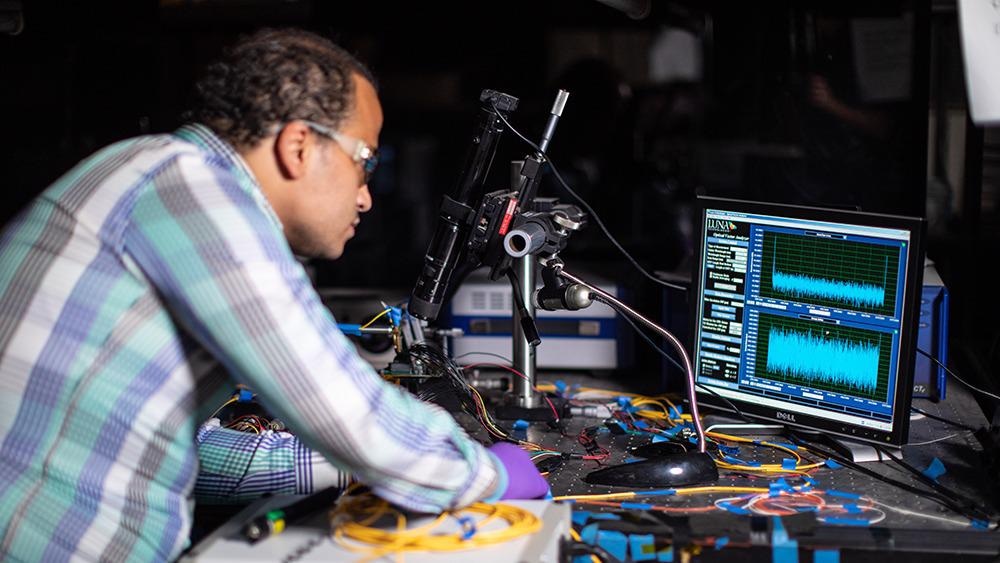As per data obtained from the United Nations’ telecommunications agency, 93% of the world’s population has access to a mobile-broadband network of some type. Since data has turned easily available to consumers, there is also a need to get more of it with higher speeds.
 Rady’s prototype chip operates from 25 to 40 GHz, creating four channels each of a 5 GHz bandwidth. Image Credit: Justin Baetge, Texas A&M Engineering.
Rady’s prototype chip operates from 25 to 40 GHz, creating four channels each of a 5 GHz bandwidth. Image Credit: Justin Baetge, Texas A&M Engineering.
Ramy Rady, a doctoral student in the Department of Electrical and Computer Engineering at Texas A&M University, has developed a chip that has the potential to revolutionize the current data rate for processors and technologies like laptops, smartphones, etc. Dr Sam Palermo, professor, also contributed to this project.
This was executed in collaboration with Dr Kamran Entesari, his faculty advisor and professor, and Dr Christi Madsen, professor.
Photons are extremely fast particles capable of moving at the speed of light. On the other hand, electrons move much slower at around 2,200 km/second, which is below 1% of the speed of light.
Incorporating photonic structures onto a silicon substrate using optics, Rady leveraged the speed offered by the photons while making use of the present electronic CMOS (Complementary Metal Oxide Semiconductor) technology features to create silicon photonic integrated circuits.
Silicon photonic integrated circuits tend to use up less power and produce less heat when compared to traditional electronic circuits. Hence, this translates into an increase in data transmission. Previous studies in this context were performed only with the help of optical processing.
Rady and his group are planning to take the next step toward using microwave photonics, a branch of optics that involves enhancing the microwave signals’ quality with the help of photonic structures. The benefit of Rady’s project over all earlier solutions is its small size and high-speed operation, that is, data and frequency rates.
My prototype chip operates from 25 to 40 gigahertz, creating four channels each of a 5 gigahertz bandwidth. This chip operates at a higher speed with a higher data rate than the previous generation of chips which relied on optical processing. The new chip is capable of reaching nearly five times the bandwidth compared to a contemporary cell phone.
Ramy Rady, Doctoral Student in the Department of Electrical and Computer Engineering at Texas A&M University
According to Rady, the movement of electrons is restricted, and consequently, the quality of energy transmitted and stored to the phone, for instance, is also limited. This is the place where the integration of photons plays a role.
This project received financial support from the National Science Foundation and has been featured in two papers authored by Rady.
Source: https://www.tamu.edu/